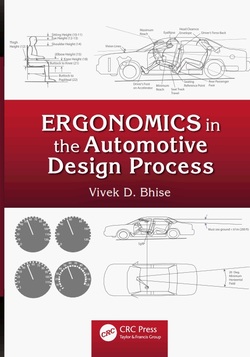The book begins with the definitions and goals of ergonomics, historic background, and ergonomics approaches. It covers human characteristics, capabilities, and limitations considered in vehicle design in key areas such as anthropometry, biomechanics, and human information processing. It then examines how the driver and the occupants are positioned in the vehicle space and how package drawings and/or computer-aided design models are created from key vehicle dimensions used in the automobile industry. The author describes design tools used in the industry for occupant packaging, driver vision, and applications of other psychophysical methods. He covers important driver information processing concepts and models and driver error categories to understand key considerations and principles used in designing controls, displays, and their usages, including current issues related to driver workload and driver distractions.
The author has included only the topics and materials that he found to be useful in designing car and truck products and concentrated on the ergonomic issues generally discussed in the automotive design studios and product development teams. He distills the information needed to be a member of an automotive product development team and create an ergonomically superior vehicle.











